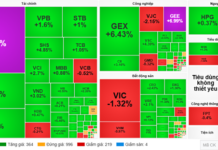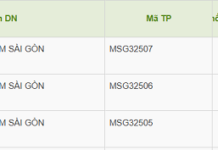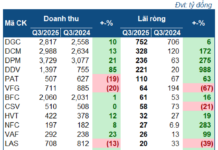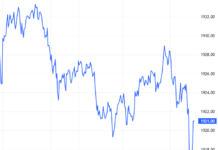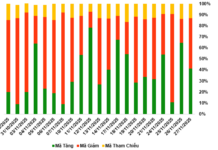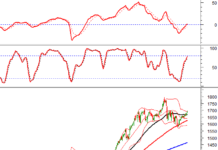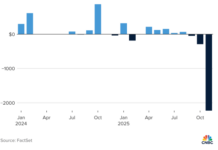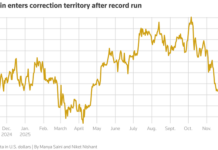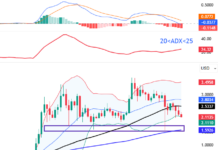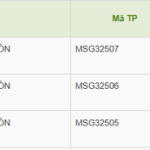Global gold prices plummeted during Tuesday’s trading session (October 8), pressured by the resilient US dollar and rising US Treasury bond yields, as markets no longer anticipate a 50-basis point rate cut from the Federal Reserve in their upcoming meeting. Investors also exercised caution ahead of the Fed’s release of September meeting minutes and the latest inflation data from the US Department of Labor.
At the close of trading in New York, spot gold fell by $20.90/oz compared to the previous session’s close, equivalent to a 0.79% drop, ending at $2,622.20/oz, according to data from the Kitco exchange.
At around 8 am Vietnam time, spot gold prices in the Asian market dipped by $0.20/oz compared to the US session close, trading at the $2,622.00/oz level. Converted using Vietcombank’s USD selling rate, this price is equivalent to nearly VND 79.1 million/tael, a decrease of VND 700,000/tael compared to yesterday morning.
Vietcombank quoted USD exchange rates at 24,635 VND (buying) and 25,025 VND (selling) at the beginning of the day, a decrease of 25 VND at each price point compared to the previous morning.
Tuesday’s decline marked the fifth consecutive session of losses for gold prices and the sharpest percentage drop since late August. The precious metal has been range-bound and choppy since hitting an all-time high of $2,685.42/oz on September 26.
“Gold prices have been down for the past few days due to shifting rate expectations,” said David Meger, director of metal trading at High Ridge Futures, in a statement to Reuters.
According to data from the FedWatch Tool on the CME exchange, markets are now betting on an 87.5% likelihood of the Fed lowering rates at their next meeting, with all of this percentage attributed to a 0.25-point reduction. The remaining 12.5% accounts for the possibility of the Fed keeping rates unchanged at 4.75-5%.
Just last week, the probability of a 50-basis point cut in November fluctuated between 30-40%.
The shifting rate expectations have pushed up US Treasury yields and the dollar’s exchange rate, exerting further downward pressure on gold.
On Monday, the yield on the 10-year US Treasury note surpassed the 4% threshold for the first time in two months. On Tuesday, the yield on this tenor eased slightly but remained above 4%, ending the session at around 4.02%.
The Dollar Index, measuring the greenback’s strength against a basket of six major currencies, closed Tuesday at 102.55 points, up 0.01 points from the previous close. Over the past five sessions, the index has climbed more than 0.8%, according to data from MarketWatch.
For the remainder of the week, investors’ attention will focus on US inflation data, including the consumer price index (CPI) expected to be released on Thursday and the producer price index (PPI) on Friday. Before that, the Fed will publish the minutes of its September meeting on Wednesday.
The inflation reports will play a role in determining the magnitude of the Fed’s rate cut in November, subsequently influencing the trajectory of gold prices.
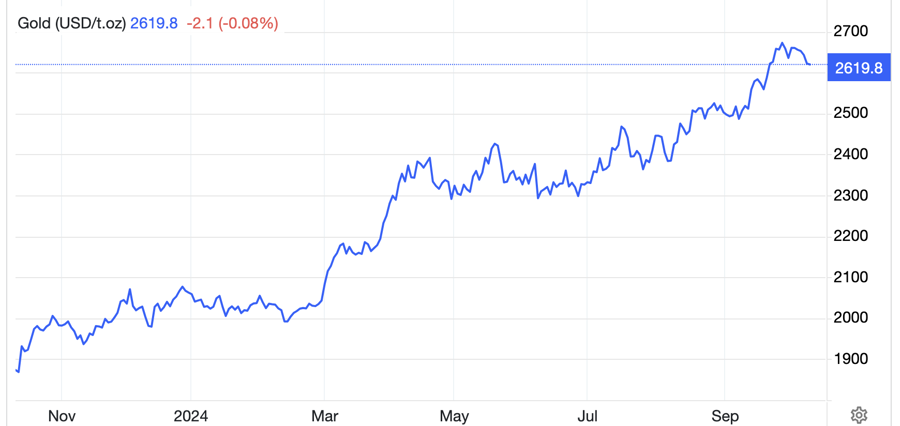
“The inflation data to be released by the US on Thursday could show that price pressures continue to ease, but it is unlikely to rekindle fresh hopes for a significant Fed rate cut. Therefore, gold prices can only rely on geopolitical risks to climb higher,” stated Commerzbank in a report.
Christopher Watling, a strategist at Longview Economics, argued that rising US Treasury yields and the sudden strength in the dollar had “put the brakes” on gold’s rally. “In addition to shifting rate expectations and the dollar’s exchange rate, gold is also vulnerable from the perspective of investor positioning, sentiment, and technical patterns,” Watling added.

